A Growing Sense of Well-Being.
Vegetation not only grows in many directions but in significance as well. Throughout the countryside as well as in the city. And on the roof? Although natural green areas are considered a symbol of healthy air, plants have not yet made a major appearance in architecture. It‘s time to free them from their shadowy existence. After all, the positive effects of revegetation systems have long been recognized – and are remarkably diverse.
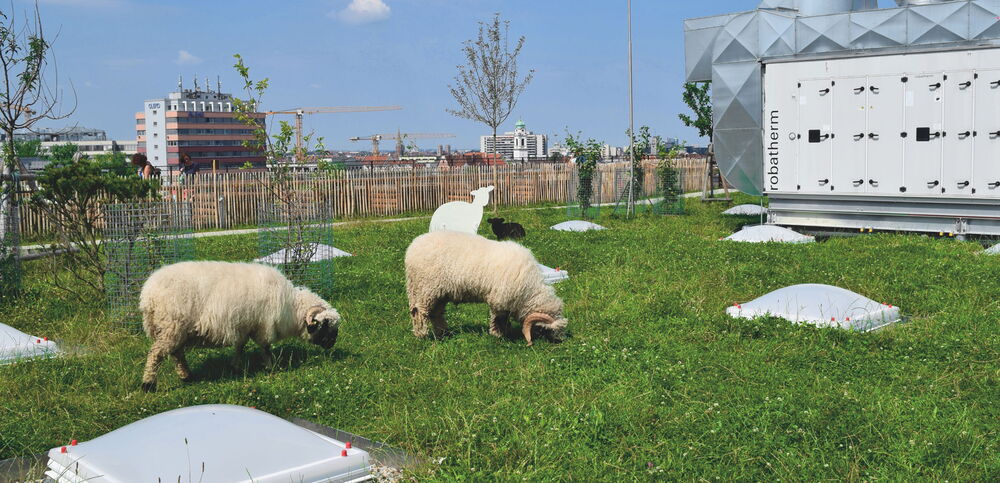
The aesthetic aspects of greenery are probably the first to catch one‘s eye. In this way and through skillful planting, stationary structures can be given a lively, nature-like character. Sometimes greenery is an essential part of an architectural concept, as in the robatherm building located in Jettingen-Scheppach. Here, the entire first floor was sloped and extensively greened. In addition to the visual benefits, the tangible advantages of greening are particularly pleasant, at any time of the year.
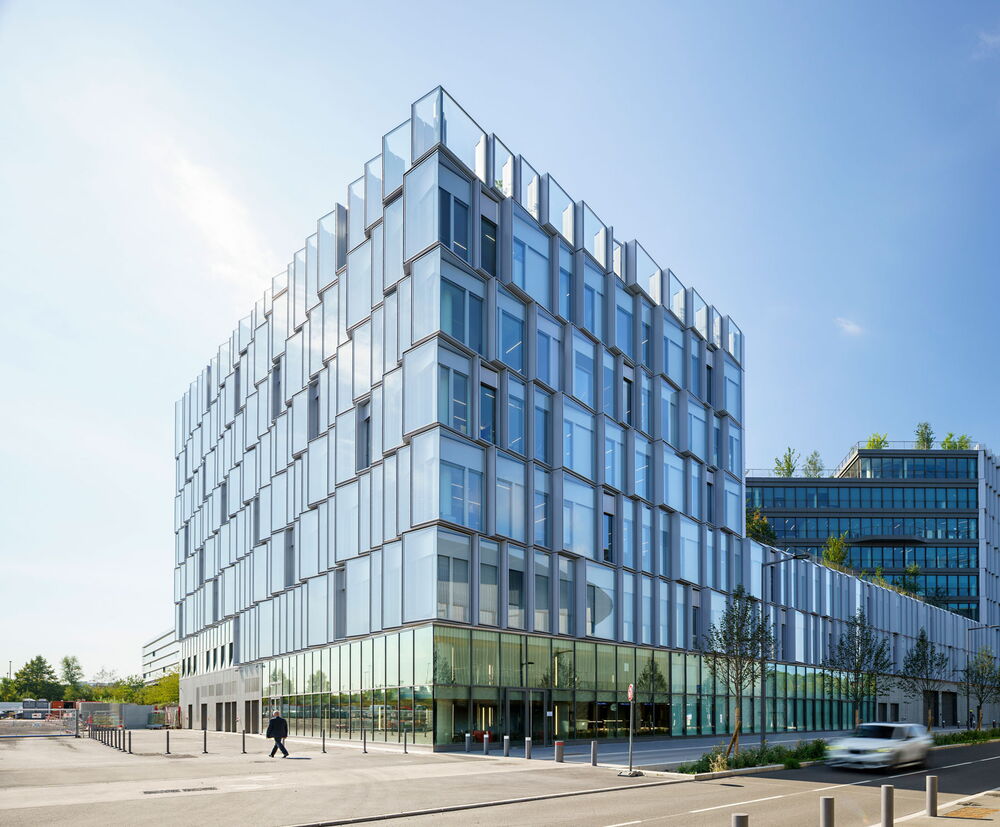
Natural Temperature Balance
A direct comparison clarified that a flat roof covered with a standard layer of gravel and bituminized board can heat up to 80°C [176°F] on hot summer days. In contrast, under the same conditions, a green roof only reaches about 20°C to 25°C [68°F to 77°F]. As plant growth and soil provide insulation, they store more significant amounts of rainwater and have a cooling effect on the building through evaporation. In overheated urban areas, green rooftops can reduce the temperature comfortably. But this regulating effect not only works in the summertime. Because the layer of roof substrate, usually 15cm to 20cm thick and together with the vegetation, also develops an insulating function against the cold. The green rooftop ultimately remains up to 10°C [4°F] warmer than a conventional covered flat roof during the winter. And less heat loss means less energy consumption.
Sensible Addition to Air Handling Technology
So a green rooftop can contribute to lesser cooling and heating needs when using indoor air handling units. In addition, strong temperature fluctuations are minimized throughout the year – which are economical and ecological advantages that should not be underestimated given the increasing number of weather extremes due to climate change. And suppose you‘re going for renewable power generation. In that case, building greening is just as effective a contributor. The evaporation process decreases operating temperature of a photovoltaic system, allowing a photovoltaic system to produce up to 16% more power than on an unplanted roof.
Beneficial for People and Biodiversity
In addition to such measurable benefits, however, greening up buildings can do much more. Indoors, vegetation systems increase air quality thanks to their filtering and humidifying properties. And the selection of suitable plants outside creates valuable habitat for bees and other beneficial insects. With a professional concept, greening supports human needs and biodiversity.
![Dr. Gunter Mann is President of the German BuildingGreen Association [Bundesverbands GebäudeGrün e.V.]. Dr. Gunter Mann is President of the German BuildingGreen Association [Bundesverbands GebäudeGrün e.V.].](/assets/images/a/3-2-4_dr_gunter_mann-ccxgcptvfpa7cap.jpg)
Interview
Anyone deeply involved in the subject of greening quickly realizes how complex the possibilities and effects are. Some of these are highlighted in our interview with an expert in this field, biologist Dr. Gunter Mann.
Here in the middle of Munich, on a roof, and yet we are surrounded by greenery. It‘s somehow an unusual picture, but the greening up of rooftops isn‘t anything new, is it?
Dr. Gunter Mann: „There is nothing new about it, yet it is rarely implemented, making it something special. We are only greening up about 8 percent of new flat roofs currently being built. Yet companies have offered green roof systems and their professional installation since the mid-1970s. So we‘ve had the expertise and experience for about 50 years.“
What about greening up façades?
Dr. Gunter Mann: „The situation is similar here. Barely a town or city, especially in rural areas, that doesn’t boast ivy and wild grapevine-covered buildings. The experiences and systems in soilbound façade greening are just as old as those of roof greening; with only 10 to 15 years of experience in wall-bound façade greening, so-called „Living Walls“, are not as old.“
Thought-provoking question: Is that just cosmetics to suggest a green lifestyle, or are they making a genuine contribution?
Dr. Gunter Mann: „We have proven that this can reduce the ambient temperature by about 1 °C to 3 °C (1 ° F to 2 °F). This will have an even more significant effect on the „heat index“ temperature combined with shading. Plants evaporate water, and in the process, evaporative cooling is induced. In addition to these direct, measurable effects, green buildings also possess other interesting aspects.“
What aspects were you thinking of?
Dr. Gunter Mann: „Of course, they serve as heat shields and thermal insulation, helping to save cooling and heating energy. But they also have an entire package of other positive effects, such as protecting the roof‘s waterproofing and façade – for example, from extreme temperatures, hailstorms and UV rays. Furthermore, greenery helps to bind dust and pollutants, reduce noise, and also serves as a habitat for animals. Finally, green rooftops are an essential component in stormwater management.“
Personal Details: Dr. Gunter Mann
Dr. Gunter Mann is President of the German Building Green Association (BuGG) and member of the Research Association for Landscape Development and Construction‘s Guideline Committees „Green Roofs“ and „Green Façades“. The BuGG currently has more than 430 members and aims to bring the greening up of buildings to as broad an audience as possible.
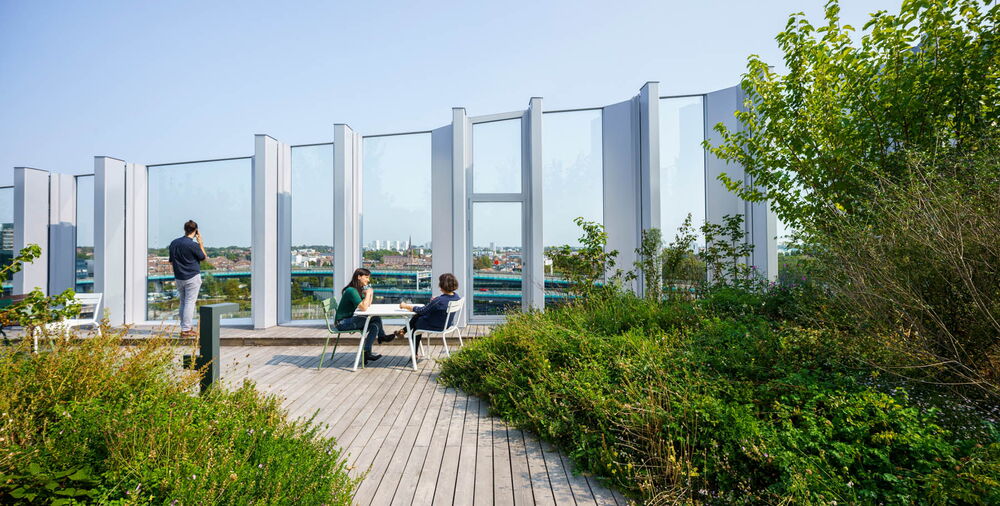
Technology and natural solutions are often seen as opposites. In contrast, robatherm is convinced that the successful interaction of both components can result in sustainable solutions. As a manufacturer of air handling units, we want to create a perfect indoor climate with the maximum possible efficiency. Are there possible synergy effects you see here concerning green rooftops?
Dr. Gunter Mann: „Buildings with green rooftops or façades providing natural insulation save on energy costs for cooling and heating. In addition, green roofs and façades create a pleasant microclimate in the building‘s surroundings, thanks to evaporation and cooling effects and an increase in humidity. Fine dust and air pollutants are also bound, which need not be filtered out.“
Green façades also reduce room heating. But are we blocking out radiant heat during the winter, which is essential for our sense of well-being?
Dr. Gunter Mann: „Not if you choose the right plants and the appropriate revegetation system. For example, suppose we choose ground-based façade greening with climbing aids and deciduous plants. We can arrange the climbing aids (ropes, lattices, nets) to be installed in front of window openings and balconies. In summer, the plants act as a natural shading system. In winter, after the leaves have fallen, they allow the unfiltered rays of the sun to pass through again.“
We actually both have the same goal: People should feel comfortable being in rooms yet using solutions as efficiently as possible. After all, our air handling units are designed to take care of the room air. Can combined effects also be achieved through dedicated indoor greening?
Dr. Gunter Mann: „Through skillfully arranged indoor greenery, the plants, on the one hand, reduce solar radiation and thus, overheating a room. On the other hand, vegetation measurably reduces air temperature through evaporative cooling. Both effects can help reduce air conditioning requirements and, consequently, facility management energy costs. Increasing the air humidity through plants is another aspect that needs to be mentioned here. So we certainly have a common goal: People should feel comfortable in buildings.“
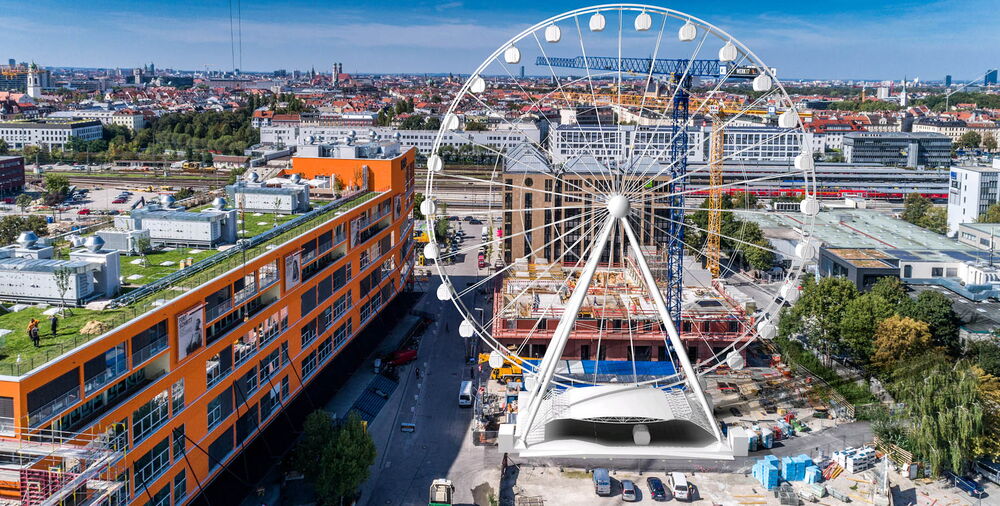
After all, when we speak of indoor greenery, we‘re not just talking about a few houseplants. So how can we picture this?
Dr. Gunter Mann: „Indoor greenery is available in planters, planter beds, or wall greenery – all in various dimensions. The system design determines the vegetation substrate (soil or hydroponics) and, thus, for the most part, the supply of water and nutrients. Depending on the extent of indoor planting, the automatic irrigation is used. Light, air, system structure, and water are the most critical factors for functional indoor greenery.“
In theory, all of this sounds comprehensible. But is it also possible to provide data to prove that greened indoor areas can significantly enhance air-handling technology?
Dr. Gunter Mann: „Yes, absolutely. Studies have shown that, depending on the type and extent of indoor greenery, humidity increases by up to about 20%. And last but not least, let‘s talk about hygiene: In these studies, airborne bioburden has been reduced by up to 70%. All in all, then, the numbers show that greenery can effectively support air-handling technology.“
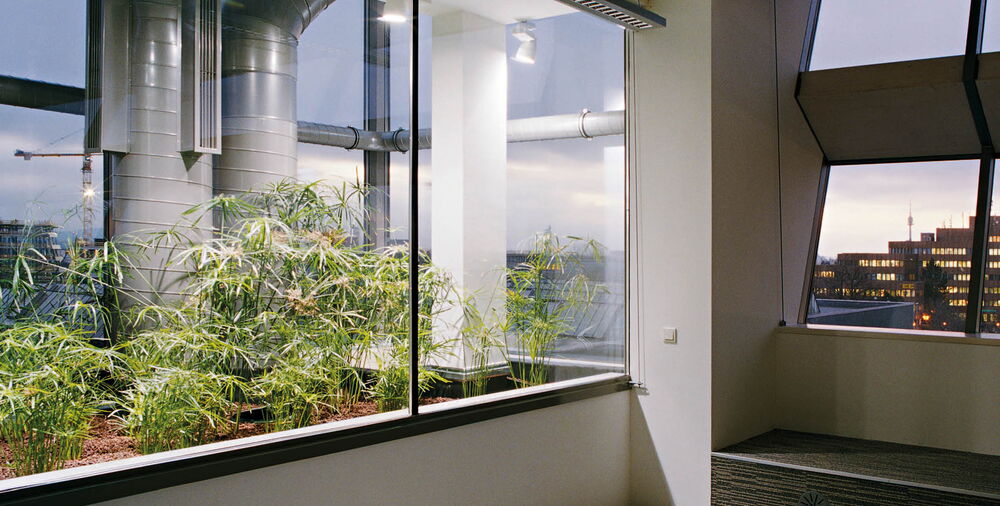
robatherm Amidst a Research Project
In a building project in Vienna, robatherm experienced how well room air technology and plants complement each other. In 2008, a highly ambitious office building was realized here, going by the name of ENERGYbase. Part of the holistic concept is a vegetated double façade. In these plant buffer rooms, during the transitional period and in winter, air for the AHUs are fed in and humidified. A certified passive house results from a research project dealing with future office buildings. Its exemplary economic properties are confirmed through scientific monitoring: The building‘s operating costs for heating, cooling, ventilation, lighting, and hot water are reduced by approximately 80%.